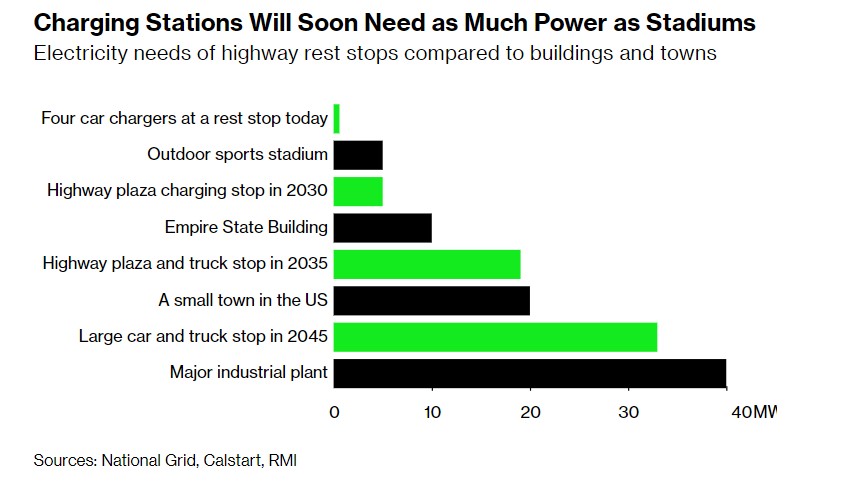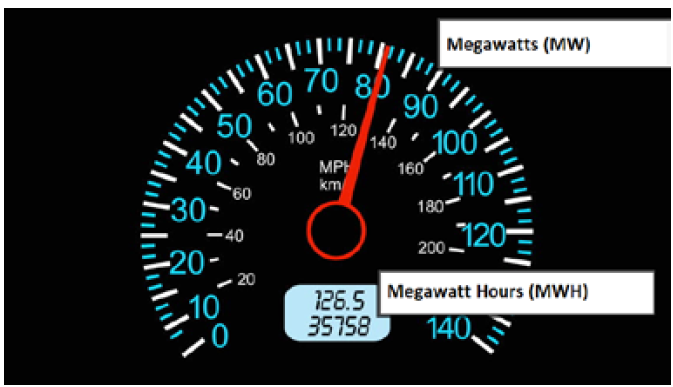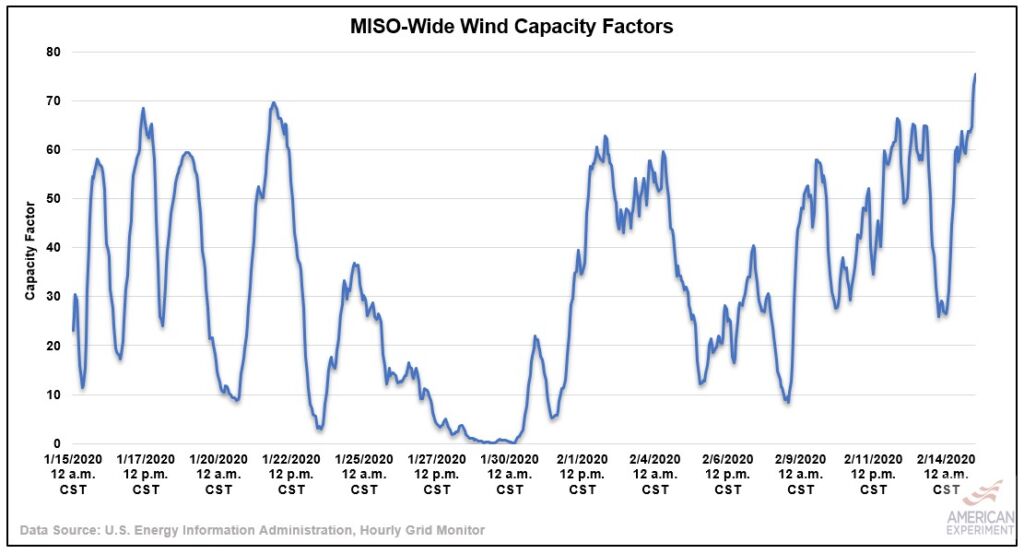Bloomberg: Electric truck stops will need as much power as a small town
A new study from National Grid has concluded that electrifying transportation, especially medium and heavy-duty transportation, will require an enormous increase in charging capabilities. According to Bloomberg:
Researchers found that by 2030, electrifying a typical highway gas station will require as much power as a professional sports stadium—and that’s mostly just for electrified passenger vehicles. As more electric trucks hit the road, the projected power needs for a big truck stop by 2035 will equal that of a small town.
The graphic below shows how the demand for power at these gas stations will only grow over time. By 2030, gas stations will need to provide enough juice to power an outdoor sports stadium, and by 2035, they will require enough power capacity to power a town of 10,000 people.

It’s important to remember there is a big difference between measuring overall energy use and power. Power is the rate at which electricity gets used, and it is frequently measured in kilowatts (kW) or megawatts (MW). Electricity use measures how much electricity has been used over a given time interval in kilowatt-hours (kWh) or megawatt-hours (MWh).
It helps to think of power, measured in MW, as the speedometer on a car, and energy, measured in MWh, as the odometer.

The challenges inherent in powering a fleet of electric vehicles will grow more substantial as we try to increase our reliance upon weather-dependent resources like wind turbines and solar panels.
For example, during the Winter of 2020, there was an 82-hour period where all of the wind turbines on the 15-state regional electric grid, the Midcontinent Independent Systems Operator (MISO), were producing less than 10 percent of their potential output.
Their electricity generation was below 1.5 percent of their potential output for more than 40-straight hours.

The unreliable nature of wind and solar will make powering truck stops and gas stations similar to those described in the study by National Grid entirely unfeasible because even though there are a lot of wind turbines on the regional grid, there will inevitably be times when they are producing very little electricity.
The only way to power these large EV charging stations will be to have enough reliable, affordable power on demand for every second of every day. This will require either coal, natural gas, or nuclear power plants to be on the grid providing power 24 hours a day, 365 days per year, rain or shine.
Unless Minnesota legalizes the construction of new nuclear power plants, any attempt to reduce emissions by mandating electric cars will simply be spinning our collective wheels.